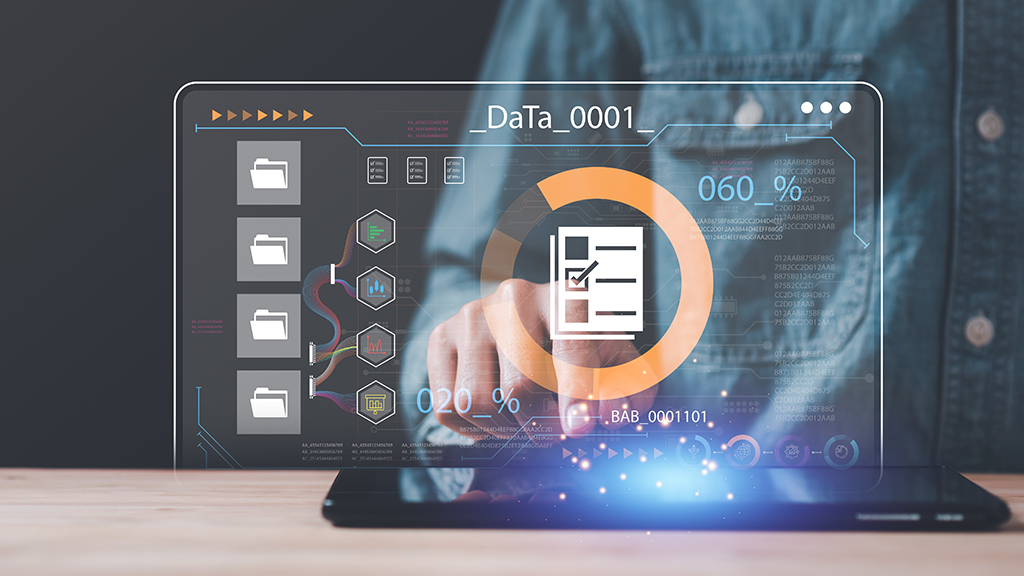
Global Content Lead - Tech & Consulting
Subscribe to the newsletter
Cloud computing is a transformative technology that delivers computing resources over the internet. It enables flexible storage, servers, software, and networking access without extensive local infrastructure. With its pay-as-you-go model, cloud computing provides cost savings, scalability, agility, reliability, and improved collaboration for organizations.
However, to fully harness its benefits, businesses must stay updated with the latest cloud computing trends. Organizations can leverage new opportunities, align their strategies with customer demands, and address security risks and compliance requirements by keeping in touch with important cloud computing trends.
This blog will take a deep dive into the leading trends in cloud computing in 2023 and how businesses can optimize them for maximum output.
2023 dominant cloud computing trends and their impact on the business world
According to statistics, in 2023, cloud computing has become a widely used technology, with an impressive 94% of businesses adopting its usage. This staggering adoption rate highlights the widespread recognition that cloud computing has a lot to offer to organizations across various industries.
Cloud computing is witnessing several notable industry trends, including edge computing, multi-cloud and hybrid cloud strategies, serverless computing, AI/ML integration, evolving cloud security measures, and more.
To empower CEOs and decision-makers with the knowledge needed to navigate the ever-changing cloud landscape, here are some latest insights across the industry’s trends and advancements. Keeping up with these trends will also help you make informed decisions when choosing the right cloud computing model for your organization.
1. Edge computing
Edge computing refers to deploying computing and storage resources at the point of data generation. It offers significant advantages in IoT applications where low latency, real-time analytics, and reliable connectivity are critical.
It empowers industries such as industrial automation, autonomous vehicles, smart cities, healthcare, retail, and more. By bringing computation closer to the data source, edge computing enables faster decision-making, reduces network congestion, and explores the full potential of IoT technologies. Its benefits include:
- Reduced latency: Edge computing minimizes the time it takes for data to travel, enabling faster response times and real-time analysis.
- Bandwidth optimization: Only relevant information is transmitted by processing data at the edge, optimizing network bandwidth, and reducing congestion.
- Improved reliability: Edge computing allows applications to operate even during network disruptions, ensuring uninterrupted functionality.
- Enhanced security: Processing data locally at the edge helps minimize data breaches and increase data privacy.
Business application of edge computing:
One example of how edge computing can be used in businesses is retail stores. Edge computing allows retailers to deploy computing resources at the edge directly within their stores or distribution centers.
Utilizing edge computing, retailers can swiftly analyze customer data, manage inventory in real-time, and process point-of-sale transactions to optimize their operations. This results in the identification of trends, personalized customer experiences, and efficient inventory management.
2. Multi-cloud and hybrid cloud strategies
Multi-cloud and hybrid cloud strategies involve utilizing multiple cloud service providers or combining cloud and on-premises infrastructure to make operations more scalable and optimize resource allocation for diverse workloads and applications. Some of their benefits include:
- Improved resilience: By distributing workloads across multiple cloud providers or combining cloud and on-premises infrastructure, organizations can enhance resilience, minimize downtime, and ensure business continuity during service disruptions.
- Cost optimization: Multi-cloud and hybrid cloud strategies enable organizations to optimize costs by leveraging the most cost-effective cloud services for specific workloads and leveraging existing on-premises infrastructure investments.
- Compliance and data sovereignty: With multi-cloud and hybrid cloud strategies, organizations can select cloud providers that comply with specific regulatory requirements and data sovereignty considerations, ensuring data remains in compliant jurisdictions and meets industry-specific regulations.
- Vendor lock-in risks: Vendor lock-in risks occur when businesses become overly dependent on a single cloud service provider. This limits flexibility and hinders innovation. Implementing a multi-cloud strategy mitigates these risks by reducing dependence on one vendor, enabling better negotiation power, avoiding technology limitations, and leveraging the strengths of different providers.
Business application of multi-cloud or hybrid-cloud strategies:
One example of a business application for multi-cloud and hybrid cloud strategies is a company that utilizes multiple cloud providers for different purposes. They may use one cloud provider for data storage and backup, another for running their customer relationship management (CRM) system, and a third for deploying their web applications.
By adopting a multi-cloud approach, a company can leverage each cloud provider’s specific strengths and capabilities, optimizing cost, performance, and functionality for each workload.
3. Serverless computing
Serverless computing is another example of leading cloud computing technology trends. It is a cloud computing model where developers focus solely on writing and deploying code without the need to manage servers, allowing for automatic scaling and reduced operational complexity. Its benefits include:
- Simplified development: Serverless computing eliminates the need for infrastructure management, allowing developers to focus solely on writing and deploying code, leading to streamlined development processes and faster time to market.
- Automatic scalability: Serverless platforms automatically scale up or down based on the incoming workload, ensuring optimal performance and cost-efficiency, as resources are allocated dynamically in response to demand.
- Improved developer experience: Serverless platforms provide built-in services and functionalities, such as event triggers and pre-configured integrations, making it easier and faster for developers to build, deploy, and iterate on applications, ultimately accelerating the development cycle.
Business application of serverless computing:
One business application of serverless computing is in the field of e-commerce. For example, an online retail company can leverage serverless computing to handle sudden spikes in web traffic during peak shopping seasons.
By utilizing serverless functions to handle checkout processes, inventory management, and order processing, a business can automatically scale its resources based on demand. As a result, ensuring a seamless and responsive shopping experience.
4. Artificial intelligence (AI) and machine learning (ML) in the cloud
Artificial intelligence (AI) and machine learning (ML) in the cloud refer to the utilization of cloud computing resources to power and deploy AI and ML algorithms, enabling advanced analytics, automation, and intelligent decision-making.
In the present year and beyond, cloud service providers like Google, Amazon, and Microsoft will continue applying their own AI and ML technology to create more efficient and economical cloud services for their global customer base. Some benefits of using AI and ML for cloud include:
- Democratization: Cloud-based AI and ML services make advanced technologies more accessible to businesses of all sizes, enabling organizations without extensive resources or technical expertise to leverage powerful AI and ML capabilities and drive innovation.
- Rapid Prototyping: Cloud platforms offer pre-configured AI and ML services, tools, and frameworks that facilitate faster prototyping and deployment of AI-powered solutions. This accelerates development cycles, reduces time to market, and enables businesses to capitalize on opportunities more quickly.
- Reduced costs: Cloud-based AI and ML services follow a pay-as-you-go model, allowing organizations to scale resources up or down as needed. This cost-effective approach eliminates the need for significant upfront investments in hardware and software, optimizing budget allocation and reducing overall costs.
Business application of AI/ML in the cloud:
Cloud computing is essential for managing large data volumes and the computational demands of AI and ML workloads. Cloud platforms provide scalability and resources to handle diverse requirements efficiently.
They offer specialized services and frameworks for building, training, and deploying ML models. Additionally, the trend of AutoML in cloud platforms simplifies model creation for non-experts, automating processes like model selection and hyperparameter tuning.
Furthermore, cloud computing empowers businesses to leverage AI and ML capabilities, driving innovation and gaining a competitive edge. Organizations can leverage cloud-based AI and ML services to develop virtual assistants or chatbots that can handle customer inquiries, provide personalized recommendations, and resolve issues.
By analyzing customer data and interaction patterns, AI and ML algorithms can enhance the customer experience, automate routine tasks, and improve response times.
5. Cloud security and compliance
Another major cloud computing trend is cloud security and complaince. This refers to the measures and practices implemented to protect data, applications, and infrastructure in the cloud, ensuring confidentiality, integrity, and adherence to regulatory requirements. Its various benefits include:
- Data protection: Cloud security measures, such as encryption and access controls, help safeguard sensitive data, ensuring its integrity against unauthorized access, breaches, or data loss.
- Enhanced compliance: Cloud service providers often adhere to industry-specific regulations and standards, providing businesses with built-in compliance frameworks and assisting them in meeting regulatory requirements more effectively.
- Centralized monitoring: Cloud security platforms offer centralized management and monitoring capabilities, allowing businesses to oversee security measures across their cloud infrastructure, detect threats or anomalies, and respond promptly to security incidents.
Business applications for cloud security and compliance:
One business application of cloud security and compliance can be seen in the financial industry. Cloud security measures and compliance frameworks enable financial institutions to protect sensitive customer data, ensure data privacy, and meet regulatory requirements, such as the Payment Card Industry Data Security Standard (PCI DSS) or the General Data Protection Regulation (GDPR).
6. Blockchain technology adaptation
Blockchain adaptation in the cloud refers to integrating blockchain technology with cloud computing infrastructure and services. It can provide a decentralized architecture, secure data encryption, transparent audit trails, and efficient consensus mechanisms. By integrating blockchain into cloud systems, businesses can achieve increased trust and improved data management.
While the specific level of blockchain adaptation in the cloud may vary, there are several potential benefits for combining these technologies such as:
- Enhanced transparency: Blockchain’s distributed nature allows for transparent tracking and auditing of data and transactions, providing increased visibility.
- Immutability: Once data is recorded on a blockchain, it becomes virtually immutable. The use of cryptographic hashes and consensus mechanisms ensures that data stored on the blockchain cannot be tampered with or altered without detection. This feature ensures data integrity in cloud systems, making it highly resistant to unauthorized modifications or data breaches.
- Smart contracts and automation: Cloud-based smart contracts, powered by blockchain technology, enable the automation and execution of predefined contractual agreements.
- Decentralized cloud storage: Blockchain can be used to create decentralized cloud storage solutions, where files are securely distributed and stored across a network of nodes.
Business application of blockchain adoption:
Blockchain enables the secure recording of every transaction and movement of goods, ensuring immutability and preventing fraud or tampering. Cloud-based blockchain platforms facilitate real-time visibility across the supply chain, allowing stakeholders to track and verify product origin, authenticity, and condition. This integration improves efficiency, reduces counterfeiting risks, enhances supplier management, and strengthens overall supply chain collaboration and resilience.
7. Kubernetes containerization
Kubernetes (k8s or kube) is an open-source container orchestration platform that automates processes such as deploying, managing and scaling containerized apps. It allows organizations to efficiently manage a large number of containers across multiple hosts, providing a scalable and highly available environment.
Being one of the prominent cloud computing market trends, Kubernetes containerizations can revolutionize the way applications are developed, deployed, and managed. Some of its benefits include:
- Portability: Containerization provides a consistent environment for applications to run across different platforms and environments. Kubernetes allows applications to be easily deployed and managed across various cloud providers, on-premises infrastructure, and development environments, ensuring portability and consistency.
- High availability: Kubernetes manages containerized applications across a cluster of nodes, ensuring high availability and fault tolerance. It automatically detects and replaces failed containers, maintaining application uptime and enhancing resilience.
- Simplified management: Kubernetes automates many application deployment, scaling, and management aspects. It simplifies tasks such as load balancing, service discovery, health monitoring, and rolling updates, reducing manual effort and enabling efficient management.
Business application of Kubernetes:
One business application of Kubernetes is in deploying and managing microservices-based architectures. By leveraging Kubernetes, businesses can easily manage, and scale complex applications composed of multiple microservices.
Conclusion
As we enter the next year, significant transformations are on the horizon as cloud service providers continue to evolve their offerings. Several leading trends in cloud computing, including edge computing, multi-cloud and hybrid cloud strategies, serverless computing, AI/ML integration, and evolving cloud security measures, are poised to shape the business landscape. Enterprises must stay updated on these cloud computing trends to seize new opportunities, remain competitive, and align their strategies with customer demands.
Reach out to us at marketing@confiz.com and let our cloud technology experts guide you about cloud computing market trends and how you can leverage them for your business’s success.



